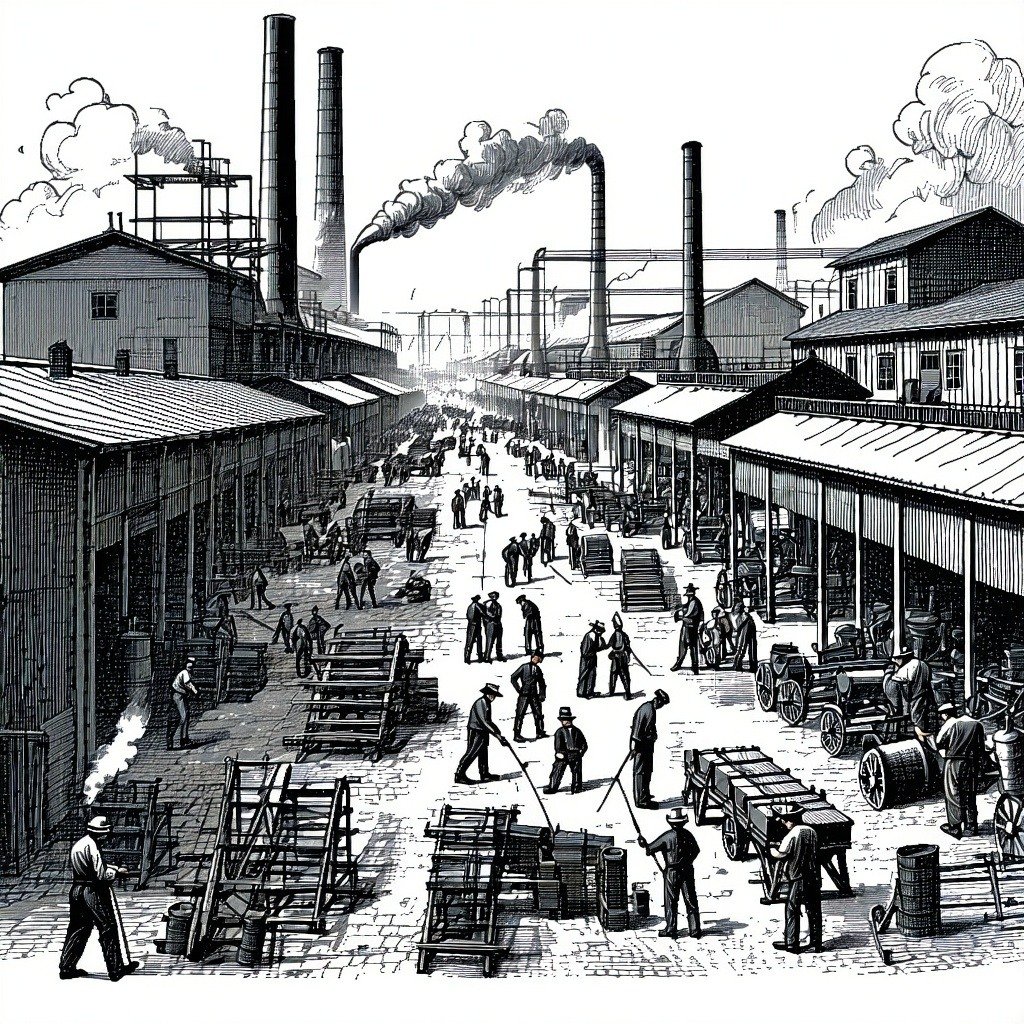
If tariffs are supposed to bring back jobs, who exactly is going to fill them?
KEY TAKEAWAYS
- Manufacturing jobs peaked in 1979 and never fully recovered
- Post-GFC and post-COVID, manufacturing job levels have stabilized but not boomed
- There are currently more manufacturing job openings than unemployed workers
- Tariff policy is unlikely to bring back jobs that already exist
- Labor preferences have shifted toward service jobs and higher education
MY HOT TAKES
- Nostalgia is not a policy plan
- You can’t bring back jobs if no one wants them
- The American worker has moved on—but our politics haven’t
- Tariffs won’t rewind the clock
- Folk songs might be better at describing labor than most politicians
- You can quote me: “"Literally, every unemployed manufacturing laborer can have a job TODAY. AND there would still be some left over.”
Where have all the flowers gone? American folk singer Pete Seger wrote this hit in the 1950s, though it was performed by a who’s-who of folk singers throughout the 60s, which is probably where most of us remember it from. As most folk songs do, this one has deep messaging. Though I like it for its many metaphors, there are many folk songs that directly address the plight of the American worker.
As far back as I can remember that plight has been in the zeitgeist of the US. The US, afterall, was built on the backs of laborers who rarely got the upper hand, riding the economic booms and busts and having to navigate the evolution of the American industry. When I use the word “industry,” I use it broadly. For most of us though, that word evokes visions of bustling assembly lines, rivet guns popping, molten steel throwing sparks about, presses pressing, hammers hammering, etc., with mostly men lined up, lunch boxes in tow, waiting to punch cards on one side of a poorly lit plant, and lined up for a paycheck or pink slip on the other. Oh, and, of course, big smokestacks in the background billowing clouds of who knows what–a sign that things were being produced.
That vision, at least in my head, is mostly black and white with a slight hint of sepia. Why? Because that was American industry before the 1970s when the US began to undergo a major shift from a manufacturing-based economy to a service-based economy. The principal reason for the shift was lower labor costs abroad. Check out the following chart and keep reading.

This chart shows US manufacturing jobs in the US. You can see the sharply increasing trend post-WWII as manufacturing boomed. You will also note steep declines during recessions, which, rightly so, created a soft spot for American labor in the US psyche. Worse than that, we note how the manufacturing labor force peaked in 1979, fell into a shallow decline, but ultimately took a steep decline in the wake of the Dotcom bubble as the technology revolution took hold. Since The Global Financial Crisis, there was a notable increase which was erased during the pandemic, but there has since been a comeback, and jobs have returned to their pre-pandemic levels.
That brings me to where we are today as the threat of a global trade war has shocked the markets and caused most economists to revise economic forecasts downward. This one included. 😉🤓 The Administration’s stated goals for the tariff tempest are to make money and bring industry back to the US. Let’s not touch the money thing today, because it’s a topic unto itself. “Bring industry back to the US,” is a catchall for “create manufacturing jobs for US citizens.” Now, as mentioned above, you would struggle to find a single American who would not clap for that notion. This one included. 😉👏 Before I go on, I want to say that there are certain strategic trade negotiations that must occur to increase security and level the playing field for US companies being ill-treated by bad actors. I want to focus on creating more manufacturing jobs for the US, so, let’s look at the numbers.
My regular followers have probably seen me mention that there are 400+ thousand–that’s 400,000+ manufacturing job vacancies at the moment. That has me wondering. 🤔 What if we can turn the clock back to May of 1979 when there were 1.945 million manufacturing jobs in the US? Would that simply mean that there would be 1.545 million job openings? Who would even fill those jobs? Let’s have a closer look at the numbers, shall we? Check out this chart then follow me to the close.

This chart shows the last ¼ century of manufacturing unemployment (red line) versus manufacturing job openings (blue line). To be clear, I focused only on Durable Goods manufacturing, and you can see at the moment how there are 348,000 vacancies with 288,000 unemployed. That means that literally, every unemployed manufacturing laborer can have a job TODAY. AND there would still be some left over. Now, let’s zoom out and look at the trends first. It should be clear that manufacturing unemployment has been on the decline and is right near the lows of the past 25 years. It should also be clear that job openings, while below their recent high, are at the high end of the range. That all means that there is strong demand for manufacturing labor. Not only are there jobs available, but also for top wages. One should also note on this chart, that job openings are relatively stable, within a narrow range for the past 25 years. You may also note that unemployment dropped precipitously in the wake of the Global Financial Crisis, while job openings, simultaneously increased. So where did all those workers go? Well, surely some retired and a younger, more highly educated workforce turned to higher paying service jobs, as more and more manufacturing was sent overseas. American job preference shifted.
As stated above, neither I, nor most Americans would ever go against the notion of creating more jobs in the US. However, I simply cannot answer the question of whether or not the US needs more manufacturing jobs. Asking that question might draw some boos from a crowd, but it should certainly be part of the calculus that goes in the strategy of this recent trade crusade. Now with the increased prospects of a recession with US companies paying for the tariffs, one wonders if I should have used the folk classic “Brother, can you spare a dime” instead of Seger’s classic.
YESTERDAY’S MARKETS
Stocks declined yesterday in a vacuum of no trade war headlines, reflecting traders’ tender feelings on the matter which is far from resolved. The S&P 500 had a rare ‘death cross’ with its 50-day moving average crossing below its 200-day moving average–an indicator of a short-term momentum loss as if we didn’t know. Banks continued to show strong earnings results, and 10-year Treasury yields eased further.

NEXT UP
- Retail Sales (March) are expected to have increased by 1.4% after a 0.2% gain in February. The gain was likely due to a jump in auto sales as buyers attempted to beat the onslaught of tariffs.
- Industrial Production (March) may have slipped by -0.2% after climbing by 0.7% in the prior period.
- NAHB Housing Market Index (April) probably slipped to 38 from 39.
- Fed speakers: Hammack and Schmid. Chairman Jerome Powell will speak at 1:30 PM Wall Street time–this can be a market mover.
- Important earnings today: Citizens Financial, US Bancorp, Progressive, Abbott Labs, Prologis, Rexford Industries, Alcoa, and Kinder Morgan.
.png)

